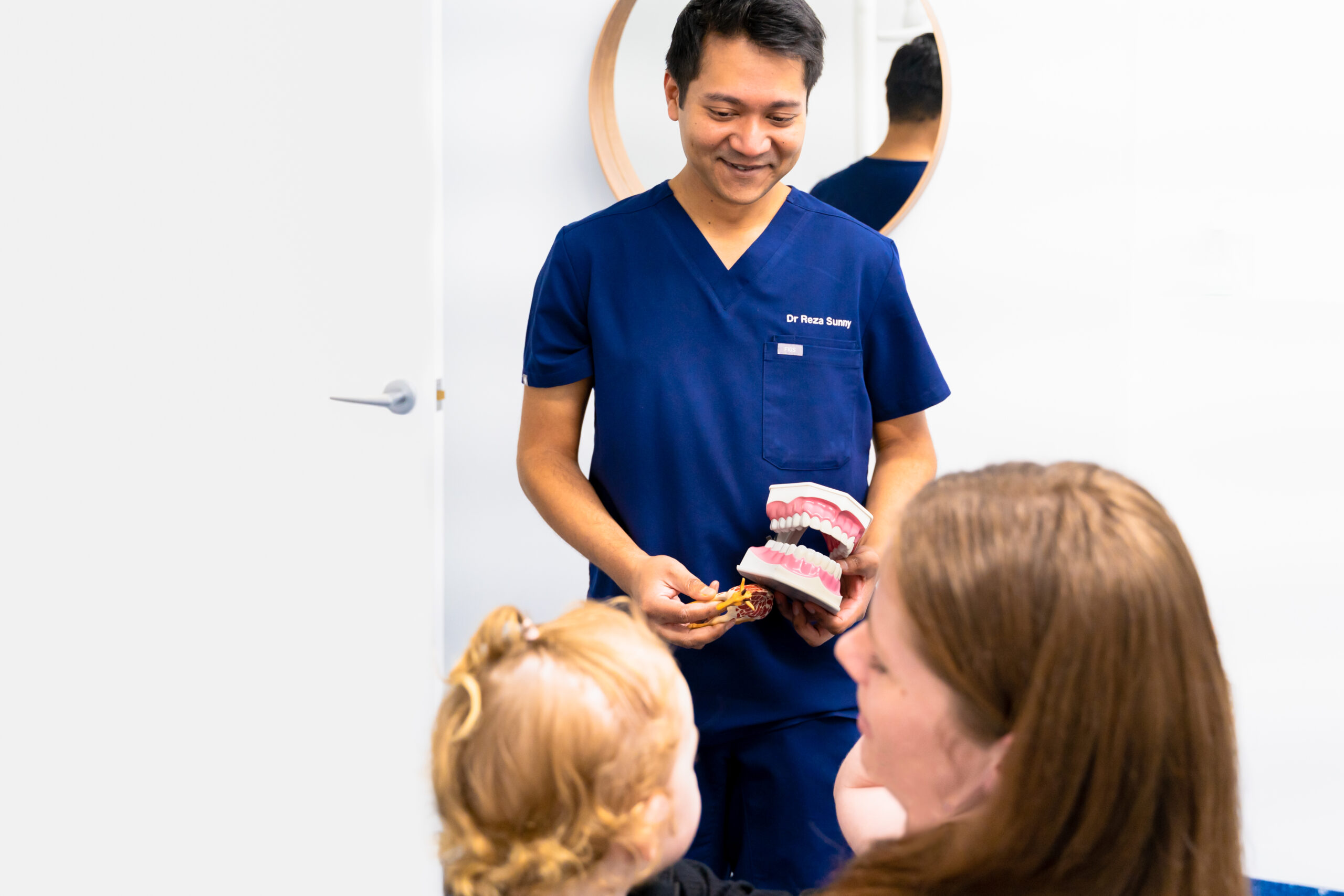Don’t have enough bone to support dental implants? Our dental team can help!

What Is a Dental Bone Graft?
A dental bone graft procedure enhances the size and strength of your jaw in regions affected by bone loss. The grafting material can be sourced from your own body (autogenous), acquired from a human tissue bank (allograft), an animal tissue bank (xenograft), or be synthetic in nature (alloplast).


How Does a Dental Bone Graft Work?
A dental bone graft involves a multi-step process aimed at restoring or enhancing the bone structure in the jaw. Here’s how it generally works:
Consultation and Assessment
The process begins with a consultation with your dentist or oral surgeon. They will assess your oral health, review your medical history, and determine if a bone graft is needed based on factors such as tooth loss, bone density, and the planned dental procedure (e.g., dental implant placement).
Choosing the Graft Material
Depending on your case, your dental professional will discuss the appropriate graft material. This could be your own bone (autogenous graft), bone from a donor (allograft), bone from an animal (xenograft), or a synthetic material (alloplast).
Preparation
If the graft material is not from your own body, it will be prepared and sterilised to ensure compatibility and safety.
Placing and Securing the Graft
During the surgery, the chosen graft material is placed at the site where bone augmentation is needed. This could be a small area or a larger section of the jaw. The graft material serves as a scaffold for new bone growth.
In some cases, the graft material might be secured with small screws, pins, or membranes to keep it in place and encourage optimal healing.
Healing and Integration
Over time, your body’s natural healing processes will gradually replace the graft material with your own new bone. This process is called osseointegration. The existing bone fuses with the graft, strengthening the jaw’s structure.
Monitoring and Follow-Up
After the procedure, you will have follow-up appointments with your dental professional to monitor the healing process. Depending on the type of graft and your overall health, it might take several months for the graft to fully integrate and stabilise.
Subsequent Procedures
Once the bone graft has successfully integrated, it provides a solid foundation for further dental treatments, such as dental implant placement. The new bone provides the necessary support and structure for these procedures to be successful.
Preferred Health Fund
Providers with:







Trust Your Bone Grafting Needs to Moorooka Dental Care
Our team uses the latest technology and techniques to ensure successful bone grafting outcomes, even in the most complex cases.
Our goal is to provide you with a stress-free experience while restoring your oral health and function. When you choose Moorooka Dental Care for your bone grafting needs, you can trust that you are receiving the highest standard of care from a dedicated team of professionals.
Are You Put to Sleep for a Dental Bone Graft?
The type of anaesthesia or sedation used for a dental bone graft procedure varies depending on factors like the procedure’s complexity and your preferences.
Most bone grafts are performed under local anaesthesia, numbing the treated area and allowing you to remain awake. However, if you experience anxiety or seek a more relaxed experience, options like oral sedation or intravenous (IV) sedation can be used to help you feel at ease, possibly causing drowsiness or sleepiness.
For extensive cases, such as complex surgeries, general anesthesia might be considered, inducing full unconsciousness. Your dental professional will discuss the available options and recommend the best approach for your comfort and the procedure’s requirements.


How Long Does It Take to Recover from a Dental Bone Graft?
The recovery time after a dental bone graft procedure can differ based on factors like the graft’s complexity, location, and individual healing abilities.
Initially, you might experience swelling, discomfort, and minor bleeding, which gradually subside. Pain can be managed with medication. Over the following days and weeks, you’ll likely follow a soft-food diet and attend to post-operative care, such as oral hygiene and avoiding certain activities.
The complete healing and integration of the graft with your natural bone usually takes several months. Regular follow-up appointments with your dental professional will help monitor progress.
If the graft is a precursor to dental implants, a second procedure might be required once integration is complete. Adhering to your dentist’s instructions is crucial for a smooth recovery and optimal outcomes.
What our patients say



Moorooka Dental Care
Shop C, 132 Beaudesert Road,
Moorooka QLD 4105
Tel: (07) 3848 3193
Public Transport:
From the city to Moorooka Dental Care, you may hop on the buses with numbers 110/125/115 /124. If you are travelling from the south side, you may take the buses with the numbers 110/115/117/124/125.
Our practice is 1.9km from the Moorooka train station.
